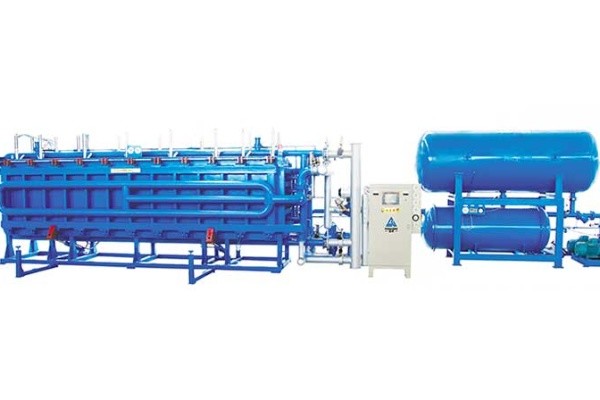- English
- Español
- Português
- русский
- Français
- 日本語
- Deutsch
- tiếng Việt
- Italiano
- Nederlands
- ภาษาไทย
- Polski
- 한국어
- Svenska
- magyar
- Malay
- বাংলা ভাষার
- Dansk
- Suomi
- हिन्दी
- Pilipino
- Türkçe
- Gaeilge
- العربية
- Indonesia
- Norsk
- تمل
- český
- ελληνικά
- український
- Javanese
- فارسی
- தமிழ்
- తెలుగు
- नेपाली
- Burmese
- български
- ລາວ
- Latine
- Қазақша
- Euskal
- Azərbaycan
- Slovenský jazyk
- Македонски
- Lietuvos
- Eesti Keel
- Română
- Slovenski
- मराठी
- Srpski језик
The feature of the EPS machine(1)
2021-12-09
Electric power steering system(EPS machine) applies the latest power electronics technology and high-performance motor control technology to the vehicle steering system, which can significantly improve the vehicle dynamic and static performance, improve the driver's comfort and safety, reduce environmental pollution and so on. Therefore, once the system is proposed, it has been valued, developed and studied by many large automobile companies. In the future steering system, electric power steering will become the mainstream of the steering system. Compared with other steering systems, the outstanding advantages of the system are reflected in
Reduced fuel consumption(EPS machine)
The hydraulic power steering system needs the engine to drive the hydraulic oil pump to make the hydraulic oil flow continuously, which wastes some energy. On the contrary, the electric power steering system (EPS) only needs the energy provided by the motor when steering operation is required, which can come from the battery or the engine. Moreover, the energy consumption is related to the steering of the steering wheel and the current vehicle speed. When the steering wheel does not turn, the motor does not work. When it needs to turn, the motor starts to work under the action of the control module to output the torque of the corresponding size and direction to generate the auxiliary steering torque. Moreover, the system outputs the maximum steering torque when the vehicle turns in place. With the change of the vehicle speed, the output torque also changes. The system truly realizes "on-demand energy supply", which is a real "on-demand" system. When the car starts in cold winter, the traditional hydraulic system reacts slowly until the hydraulic oil is preheated. Because the electric power steering system is not dependent on the engine and has no hydraulic oil pipe, it is not sensitive to cold weather, and the system can work even at - 40 ℃, so it provides fast cold start. Since the system does not preheat when starting, energy is saved. Without using the hydraulic pump, the parasitic energy loss of the engine is avoided and the fuel economy is improved. The comparative experiment between the vehicle equipped with electric power steering system and the vehicle equipped with hydraulic power steering system shows that the fuel consumption of national vehicles equipped with electric power steering system is reduced by 2.5% without steering and 5.5% with steering.
Enhanced steering following(EPS machine)
In the electric power steering system, the electric power machine is directly connected with the power assist mechanism, so that its energy can be directly used for wheel steering. The system uses the function of inertial shock absorber to greatly reduce the wheel reverse and steering front wheel shimmy. Therefore, the anti disturbance ability of the steering system is greatly enhanced. Compared with the hydraulic power steering system, the rotating torque is generated by the motor without the steering hysteresis effect of the hydraulic power steering system, which enhances the following performance of the steering wheel to the steering wheel.
Improved steering return characteristics(EPS machine)
Until today, the development of power steering system performance has reached the limit, and the righting characteristic of electric power steering system has changed all this. When the driver turns the steering wheel by an angle and releases it, the system can automatically adjust the wheel to return to the center. The system also allows engineers to use software to adjust design parameters to the greatest extent to obtain the best correction characteristics. From the lowest speed to the highest speed, a cluster of righting characteristic curves can be obtained. Through flexible software programming, it is easy to obtain the torque characteristics of the motor at different speeds and different vehicle conditions. This torque characteristic enables the system to significantly improve the steering ability and provide the steering return characteristics matching with the vehicle dynamic performance camera. In the traditional hydraulic control system, in order to improve this characteristic, the mechanical structure of the chassis must be reformed, which is difficult to realize.

Reduced fuel consumption(EPS machine)
The hydraulic power steering system needs the engine to drive the hydraulic oil pump to make the hydraulic oil flow continuously, which wastes some energy. On the contrary, the electric power steering system (EPS) only needs the energy provided by the motor when steering operation is required, which can come from the battery or the engine. Moreover, the energy consumption is related to the steering of the steering wheel and the current vehicle speed. When the steering wheel does not turn, the motor does not work. When it needs to turn, the motor starts to work under the action of the control module to output the torque of the corresponding size and direction to generate the auxiliary steering torque. Moreover, the system outputs the maximum steering torque when the vehicle turns in place. With the change of the vehicle speed, the output torque also changes. The system truly realizes "on-demand energy supply", which is a real "on-demand" system. When the car starts in cold winter, the traditional hydraulic system reacts slowly until the hydraulic oil is preheated. Because the electric power steering system is not dependent on the engine and has no hydraulic oil pipe, it is not sensitive to cold weather, and the system can work even at - 40 ℃, so it provides fast cold start. Since the system does not preheat when starting, energy is saved. Without using the hydraulic pump, the parasitic energy loss of the engine is avoided and the fuel economy is improved. The comparative experiment between the vehicle equipped with electric power steering system and the vehicle equipped with hydraulic power steering system shows that the fuel consumption of national vehicles equipped with electric power steering system is reduced by 2.5% without steering and 5.5% with steering.
Enhanced steering following(EPS machine)
In the electric power steering system, the electric power machine is directly connected with the power assist mechanism, so that its energy can be directly used for wheel steering. The system uses the function of inertial shock absorber to greatly reduce the wheel reverse and steering front wheel shimmy. Therefore, the anti disturbance ability of the steering system is greatly enhanced. Compared with the hydraulic power steering system, the rotating torque is generated by the motor without the steering hysteresis effect of the hydraulic power steering system, which enhances the following performance of the steering wheel to the steering wheel.
Improved steering return characteristics(EPS machine)
Until today, the development of power steering system performance has reached the limit, and the righting characteristic of electric power steering system has changed all this. When the driver turns the steering wheel by an angle and releases it, the system can automatically adjust the wheel to return to the center. The system also allows engineers to use software to adjust design parameters to the greatest extent to obtain the best correction characteristics. From the lowest speed to the highest speed, a cluster of righting characteristic curves can be obtained. Through flexible software programming, it is easy to obtain the torque characteristics of the motor at different speeds and different vehicle conditions. This torque characteristic enables the system to significantly improve the steering ability and provide the steering return characteristics matching with the vehicle dynamic performance camera. In the traditional hydraulic control system, in order to improve this characteristic, the mechanical structure of the chassis must be reformed, which is difficult to realize.

Previous:The advantages of the EPS machine(2)

